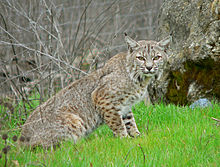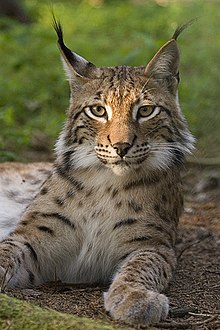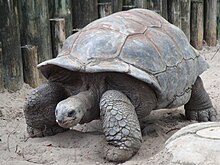Thursday, December 28, 2017
Wild Turkeys at Christmas
And now turkeys...
It turns out turkeys live in the wilderness area around Trout Lake near Telluride, Colorado.
My neighbor sees them eating grass near her house on these cold but snowless winter days.
She took this photo near the house further on down the hill between her house and mine.
Introducing the bobcat...
Below is a link to a l-o-o-o-n-g jump by a bobcat... sorry I can't actually put it on this blog.
https://www.facebook.com/NSelection/videos/10154299607351244/?hc_ref=ARRF1hqVXTjKDDGFdcDOC2Zkov7tGqjmVwPjJ9LBRUeYHHXG2zRi4SiKiYPYFsmms-8&pnref=story
Thanks to my high school classmate Linda Binns Monteith for this video from BBC Planet Earth.
Plenty of time to observe the cat and compare it to the earlier photo of the lynx in our driveway.
Here's what Wikipedia has to say about bobcats: https://en.wikipedia.org/wiki/Bobcat
And here's the intro:
The bobcat (Lynx rufus) is a North American cat that appeared during the Irvingtonian stage of around 1.8 million years ago (AEO).[2] Containing 12 recognized subspecies, it ranges from southern Canada to central Mexico, including most of the contiguous United States. The bobcat is an adaptable predator that inhabits wooded areas, as well as semidesert, urban edge, forest edge, and swampland environments. It remains in some of its original range, but populations are vulnerable to local extinction ("extirpation") by coyotes and domestic animals. With a gray to brown coat, whiskered face, and black-tufted ears, the bobcat resembles the other species of the midsized Lynx genus. It is smaller on average than the Canada lynx, with which it shares parts of its range, but is about twice as large as the domestic cat. It has distinctive black bars on its forelegs and a black-tipped, stubby tail, from which it derives its name.
Though the bobcat prefers rabbits and hares, it hunts insects, chickens, geese and other birds, small rodents, and deer. Prey selection depends on location and habitat, season, and abundance. Like most cats, the bobcat is territorial and largely solitary, although with some overlap in home ranges. It uses several methods to mark its territorial boundaries, including claw marks and deposits of urine or feces. The bobcat breeds from winter into spring and has a gestation period of about two months.
Wednesday, December 20, 2017
Identifying the lynx...
So here's the info on lynxes... Thank you, Wikipedia!
Lynx have a short tail, characteristic tufts of black hair on the tips of their ears, large, padded paws for walking on snow and long whiskers on the face. Under their neck, they have a ruff which has black bars resembling a bow tie although this is often not visible.
Body colour varies from medium brown to goldish to beige-white, and is occasionally marked with dark brown spots, especially on the limbs. All species of lynx have white fur on their chests, bellies and on the insides of their legs, fur which is an extension of the chest and belly fur. The lynx's colouring, fur length and paw size vary according to the climate in their range. In the Southwestern United States, they are short-haired, dark in colour and their paws are smaller and less padded. As climates get colder and more northerly, lynx have progressively thicker fur, lighter colour, and their paws are larger and more padded to adapt to the snow. Their paws may be larger than a human hand or foot.
The smallest species are the bobcat and the Canada lynx, while the largest is the Eurasian lynx, with considerable variations within species.
| Species | Weight | Length | Height (standing at shoulders) | |
|---|---|---|---|---|
| Eurasian lynx | males | 18 to 30 kilograms (40 to 66 lb) | 81 to 129 centimetres (32 to 51 in) | 70 centimetres (28 in)[5] |
| females | 18 kilograms (40 lb) | |||
| Canada lynx | 8 to 11 kilograms (18 to 24 lb) | 80 to 105 centimetres (31 to 41 in) | 48 to 56 centimetres (19 to 22 in)[6] | |
| Iberian lynx | males | 12.9 kilograms (28 lb) | 85 to 110 centimetres (33 to 43 in) | 60 to 70 centimetres (24 to 28 in)[7][8][9] |
| females | 9.4 kilograms (21 lb) | |||
| Bobcat | males | 7.3 to 14 kilograms (16 to 31 lb)[10] | 71 to 100 centimetres (28 to 39 in)[10] | 51 to 61 centimetres (20 to 24 in)[11] |
| females | 9.1 kilograms (20 lb) |
Species
The four living species of the Lynx genus are believed to have evolved from the "Issoire lynx", which lived in Europe and Africa during the late Pliocene to early Pleistocene. The Pliocene felid Felis rexroadensisfrom North America has been proposed as an even earlier ancestor; however, this was larger than any living species, and is not currently classified as a true lynx.[12]
Saturday, December 9, 2017
A well-fed cat...
 |
| Here, kitty, kitty... |
Is this visitor a bobcat or a lynx? It's walking down the driveway of my house at Trout Lake as if it owns the place... which I guess it does, 90% of the year.
I contacted Telluride native Jack Pera, who has done lots of nature photography around San Miguel County, with this question.
Here's his answer:
The photo of the 'cat is indeed that of a lynx. I can tell by the color. There are other identification marks but the photo isn't good enough to point those out. (Extremely large feet, black tip on the tail, longer ear tufts, etc.) The main food source is snowshoe rabbits (hares.) Their survival depends almost entirely on the population of this species of rabbit. Deb sees lynx tracks on occasion when she snowshoes above the cabin but hasn't seen one yet and neither have I. It's a treat to get to see one.
Donna Nichols reports:
I didn't see it but my nephews did. Tom showed them pix of both. They said lynx. ! I've seen lynx in that area before a few years back closer to Rico though. [Over Thanksgiving] I saw its tracks in the snow go under the porch of a cabin for sale. I saw little tracks too...cub?
My neighbor Heather noted:
I actually have only ever seen a cat in our driveway once. I think it was a lynx. But it was like this, broad daylight, and I was out walking [my dog] Maggie. She had a fit and it sauntered off down toward Sue's.
From now on, I'm keeping a log of sightings!
A few moose have shown up in the last few years, hiking over from Ophir. Deer, weasels, rabbits, and porcupines are frequent visitors.
Note: Jack is my second cousin. He used to produce a slideshow of his photos called Mountain Splendor.
This I Believe
I sat in the School of
Christian Learning—sort of an adult Sunday school—listening to Dr. Jeffrey
Siker speak. He’d been imported from
Loyola Marymount University to present four lectures about Bible interpretation
on Sunday mornings before worship at 10:30. Because he’s a New Testament
scholar and faithful Christian with a sense of humor, I respect him a lot.
But then he said, “I don’t believe in the Virgin birth.” That got my attention. I knew that the birth narratives—shepherds,
wise men, etc.—appear in only two of the Gospels, and that all four accounts of
Jesus’s life were written forty to sixty years after his death.
Jeff was saying, however, that most scholars believe that
the “baby in a manger” story was added as legends grew after the death and
resurrection. The savior of the world
needed an impressive birth to match the end of the story.
It made sense, and I felt my eyes swell with tears as I
sat in my folding chair taking notes. I
love the angel coming to Mary, the humble birth, the shepherds, and the Magi
from the East. Surely the Creator of the
universe, who chose to enter a human body to reach out to creatures “in God’s
image” on planet Earth, could have pulled off a few miracles at birth as well
as at the end of Jesus’s life. But did they
actually happen? I could feel my years
of belief in these gospel truths slipping away, and the loss hurt.
Of course the date of December 25 was completely arbitrary,
a product of Christianity’s marriage to the Roman Empire, but I prided myself
on keeping the Christ in Christmas. I
never told my kids there was a Santa Claus; instead we read accounts of the 3rd-
4th century St. Nicholas. I
allowed them a pagan Christmas tree, but we also set up a creche scene of
wooden pieces representing the shepherds and sheep, cow, donkey with Mary and
Joseph, camels, Magi, and angels, all surrounded by votive candles. The cow had to stand by the manger, awaiting
the rest of them, while the baby Jesus was hidden until Christmas Eve.
Was all that just a lovely legend, like jolly St. Nick
and the reindeer? I pondered it in my
heart for seven or eight years.
In December, 2017, Los Angeles County was attacked by
unseasonal fires and as Advent began, smoke crossed the skies day and
night. A few days later, however, I
noticed two rather bright stars setting in the west an hour or so before dawn. Instead of rolling over to go back to sleep,
I got up to look out the window and find out which stars had emerged through
the big city glow and smoky haze. It was
the left shoulder of Orion with the less-bright right shoulder directly beneath
it. To their left the three stars of his
belt twinkled, and further left, Sirius, the dog star, shone brilliantly.
O holy night, the
stars are brightly shining… A thrill of hope, the weary world rejoices…
I stood in wonder.
It
came to me: whether the Magi and shepherds and virginity of Mary are true or
not, still the birth occurred. Each
birth is an enfleshment of God’s spirit.
The birth of Jesus was a miracle, like all births, but uniquely heralded
by stars and chorused by angels, whether or not exactly as described in Matthew
and Luke. God’s reign on earth came
closer to us when the one who said “The kingdom of God is near” took his first
breath.
For many more This I Believe stories, see https://thisibelieve.org/
For many more This I Believe stories, see https://thisibelieve.org/
Saturday, November 18, 2017
Running in Canyon de Chelly
 |
| Baby Rocks near Kayenta in the Navajo Nation |
Read this account of a new ultra marathon started by Shaun Martin in this canyon in 2013.
https://www.nytimes.com/2017/11/08/sports/navajo-ultramarathon-canyon-de-chelly.html
150 runners experience local Navajo culture and history as they run along a trail on the canyon bottom, ascending to the top at the half-way point.
They pass iconic rock formations such as the stand-alone spire called Spider Woman.
Anyone can take a walk in this canyon if you hire a Navajo guide (the area is private property and the ancient homeland of many Navajos).
 |
| Baby Rocks, not far from Chinle and Canyon de Chelly |
Thank you to Michael Powell for his poetic evocation of the experience of watching the 34-mile race.
"By midmorning the sandstone canyon walls turned a translucent pink and red, as if lit from within. The sky was razor blue...."
Monday, August 21, 2017
Celebrating the Sun...
What better way to celebrate the eclipse than to learn more about our star?
Here's an amazing depiction of the sun's magnetic field...
https://www.nasa.gov/feature/goddard/2016/picturing-the-sun-s-magnetic-field
When it got dark and the temperature dropped, we learned today to appreciate all that our star gives us each day.
Thank you to NPR and Huffington Post for this information:
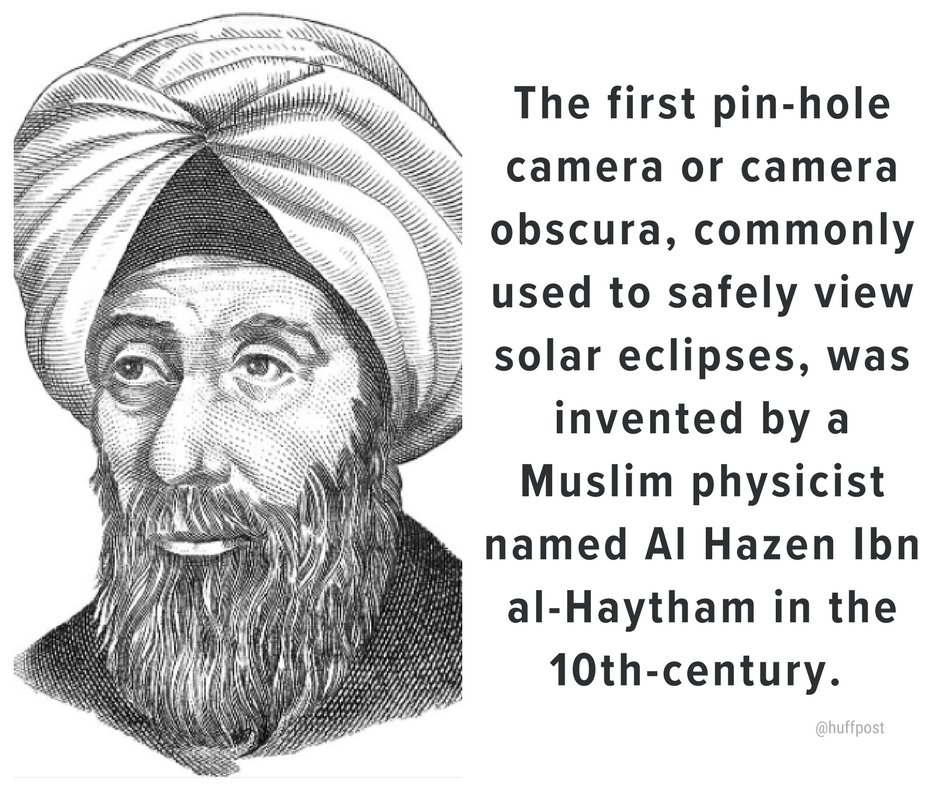
And here's more about the structure of the sun:
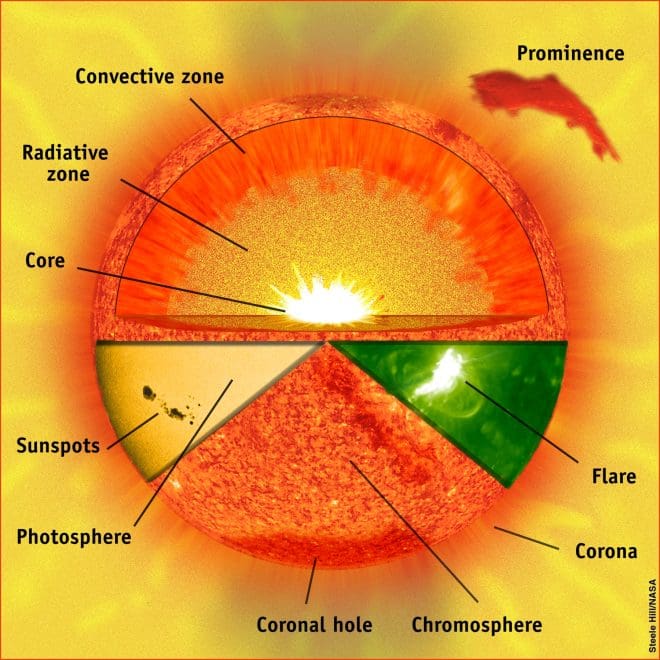
from The Sun Today:
http://www.thesuntoday.org/the-sun/solar-structure/
Here's an amazing depiction of the sun's magnetic field...
 |
| A drawing of the sun's magnetic fields laid over a NASA image of the sun |
https://www.nasa.gov/feature/goddard/2016/picturing-the-sun-s-magnetic-field
When it got dark and the temperature dropped, we learned today to appreciate all that our star gives us each day.
Thank you to NPR and Huffington Post for this information:

And here's more about the structure of the sun:

from The Sun Today:
http://www.thesuntoday.org/the-sun/solar-structure/
Moon Shadow Is Common
 |
| Moon to right above sun at 12 noon, Aug. 21 in Santa Monica (with filter) |
Solar eclipses happen about every 18 months, so I couldn't get fired up over this one.
Everybody knows that the moon rotates around Earth. That means that it passes between Earth and the Sun every month.
Because the moon is so small and 238,900 miles from Earth and doesn't rotate in the same plane with Earth and Sun, its shadow doesn't always touch Earth, but one out of 18-20 times, the shadow does touch our planet.
Thank you to Sarah Chodosh for explaining this in the journal Popular Science:
http://www.popsci.com/total-eclipses-frequency
Thank you to Sarah Chodosh for explaining this in the journal Popular Science:
http://www.popsci.com/total-eclipses-frequency
Because our planet is so big and much of it is covered by water, any one spot on a continent doesn't move under the moon's shadow that often.
But it's not that big a deal.
I'm much more interested in the movement of Earth's tectonic plates over millions of years than in the shadow of the moon passing over us today.

And here's a list of notable eclipses in the 20th Century:
https://en.wikipedia.org/wiki/List_of_solar_eclipses_visible_from_the_United_States
In any case, it's good to look outside the smaller concerns of life on Earth and look instead at movements of the sun, moon, and stars--and the changes in our own planet over millions and billions of years.

And here's a list of notable eclipses in the 20th Century:
https://en.wikipedia.org/wiki/List_of_solar_eclipses_visible_from_the_United_States
In any case, it's good to look outside the smaller concerns of life on Earth and look instead at movements of the sun, moon, and stars--and the changes in our own planet over millions and billions of years.
Wednesday, August 2, 2017
Crossing Ice Packs on the Trail
I was trying to get to a beautiful high Alpine valley near Sonora Pass on July 14, but I encountered a gully that contained the remnant ice of many snow slides last winter.
I wasn't brave enough to cross it--I hadn't brought hiking poles and didn't have a companion to call for help in case I slid down the snow.
I hiked up the side of the hill next to it and found a beautiful meadow of tiny Alpine flowers as well as spectacular views--but I didn't go back down to the trail on the other side of the slide. That would have required me to walk back up on the way back.
But today I feel justified in my decision. The LA Times reports that all high-altitude hikers in California are having a tough time this summer, especially those doing the 3,000-mile Sierra Highline Trail.
http://www.latimes.com/local/lanow/la-me-ln-pacific-crest-trail-dangerous-20170802-story.html
The photo of the hiker with poles inching across the snow tells it all.
See also this report on Mono Lake doing well this year, sent by my friend Diane, who researched and gave me instructions to the hike near Sonora Pass.
http://www.monolake.org/today/2017/07/20/mono-lake-rose-a-record-amount-in-june-2017/
Monday, July 10, 2017
Creatures Great and Small
What an amazing story on NPR today about tortoises in the Galapagos Islands!
http://www.radiolab.org/story/galapagos/
There's beauty in the amazing biodiversity and adaptation of creatures to changes in their environment... from finches to tortoises.
In the show there's also humor and sadness--how a few goats brought by pirates grew into hundreds of thousands that ate the food supply of other animals in the islands.
Much food for thought... hallelujah!
Thank you to Radio Lab for this hour-long show.
Friday, July 7, 2017
Snowmelt & Danger on the Pacific Crest, 2017
Amazing snowpack has created record snow melt and flooding in the Sierra Nevada... I took this photo on July 8, 2017, with these trees at about 10,000 ft. still surrounded by snow. The scene is about two miles from the Pacific Crest Trail.
For more photos, see:
http://www.latimes.com/local/california/la-me-flooding-sierra-nevada-20170714-htmlstory.html

People hiking the Pacific Crest Trail were endangered by higher-than-normal streams to cross. Two drowned, one slipped to his death on ice, and one probably died from heat or dehydration.
https://www.pcta.org/2017/sadness-deaths-pacific-crest-trail-50680/
Saturday, April 22, 2017
Earth Day: Hallelujah!
Earth Day dawns with exquisite beauty, a crescent moon rising close to Venus an hour before the Sun, our life-giving star.
Tuesday, April 18, 2017
When One River Captures Another...
 |
| The Grand Canyon of the Colorado River, not far from where river capture occurred 16 million years ago |
There's nothing like a glimpse of geologic time to make you whisper or shout "Hallelujah!"
Here's a report by John Schwarz in the New York Times about how a small river in Alaska, the Slims River, was captured by another river, the Alsek River in four days in 2016, reversing its course.
https://www.nytimes.com/2017/04/17/science/climate-change-glacier-yukon-river.html?_r=0
Here's another report by Hannah Devlin in The Guardian:
https://www.theguardian.com/science/2017/apr/17/receding-glacier-causes-immense-canadian-river-to-vanish-in-four-days-climate-change
I knew that this had happened to two rivers I love:
- The Gunnison River near Grand Junction, Colorado, was captured by the Colorado River, leaving behind the riverless Unaweep Canyon.
- The Colorado River just east of the Grand Canyon once flowed north into the Great Salt Lake, but about 16 million years ago, the lower and western portion of today's Colorado River captured the upper Colorado River, which with the Little Colorado River had been flowing north. "...the lower Colorado River captured the ancestral upper Colorado River and the Little Colorado in the vicinity of the present confluence of the Little Colorado and Colorado rivers."
But it's shocking to see a river capture occur in a few months in 2017, rather than millions of years ago.
Other strange things that rivers do in Utah:
http://geology.utah.gov/map-pub/survey-notes/glad-you-asked/why-does-a-river-run-through-it/
Thursday, April 13, 2017
Bats are 1/4 of the species on earth
Bats make up one-fourth of all the world's mammal species.
And in terms of sheer numbers, bats make up one-fifth of all mammals on earth.
Something to think about.
Here's an article by Annalee Newitz that begins to explain why:
So why do bats represent such a large number of mammals? Based on this study, published today in Proceedings of the Royal Society B, the researchers would argue it has to do with the animals' ability to diversify quickly in new environments — and that a big part of that is bats' extremely varied diets. Bat species range from nectar-sippers to insect-eaters and blood-munchers, and this allows them to spread into new territories.
http://io9.gizmodo.com/5862099/one-fifth-of-all-mammals-are-bats-heres-why
And in terms of sheer numbers, bats make up one-fifth of all mammals on earth.
Something to think about.
Here's an article by Annalee Newitz that begins to explain why:
So why do bats represent such a large number of mammals? Based on this study, published today in Proceedings of the Royal Society B, the researchers would argue it has to do with the animals' ability to diversify quickly in new environments — and that a big part of that is bats' extremely varied diets. Bat species range from nectar-sippers to insect-eaters and blood-munchers, and this allows them to spread into new territories.
http://io9.gizmodo.com/5862099/one-fifth-of-all-mammals-are-bats-heres-why
Tuesday, April 4, 2017
Words that drop like rain
 |
| A flower blooms in parched soil, Antelope Valley |
I was driving through the lower San Joaquin Valley, listening to a preacher on the radio, when I heard these words: "Thy doctrine will drop as the dew..." (from the CEV Bible translation).
What an odd metaphor! Doctrine seems rather stiff and large, probably klunky when dropped.
It's hard to imagine it dropping "as the dew." Only a male in love with doctrine could imagine it dropping softly or welcomely.
I grant that the alliteration is striking--literally and figuratively--in a klunky way.
I looked up the verse:
Deuteronomy 32:2 Context
1Give ear, O ye heavens, and I will speak; and hear, O earth, the words of my mouth. 2My doctrine shall drop as the rain, my speech shall distil as the dew, as the small rain upon the tender herb, and as the showers upon the grass: 3Because I will publish the name of the LORD: ascribe ye greatness unto our God.
Speech and words could drop like dew, yes. In the Hebrew Tanach, I found the verse. The facing page (in English) says, "May my teaching drop like the rain, may my utterance flow like the dew."
First of all, the passage is identified as "The Song of Moses." It is Moses or some other prophet speaking, not God, because verse 3 says "When I call out the name of YHWH...." So verse 2 should not be translated "Thy doctrine." It's "my doctrine" or teaching.
The Hebrew word lamed - qof - chet - yod could be pronounced "leek-ach-ee" and in my Webster's New World Hebrew-English dictionary, it is translated "[my] lesson; moral lesson." It is definitely smaller than doctrine. It is singular, not a collective plural like doctrine or information.
I can see how the prophet speaking could say, "May my lesson drop like the rain...." It is just one little lesson, followed by another and another, like drops of rain. But it is life-giving, like rain.
The song ends after 43 verses--43 drops of rain. Moses says, "Apply your hearts to these words... Be careful to perform all the words of this Torah, for it is not an empty thing for you, for it is your life, and through this matter shall you prolong your days on the Land to which you cross the Jordan, to possess it."
And then YHWH commands Moses to climb Mount Abarim, see the Land of Canaan, and die.
 |
| Rain in Arizona making puddles in dinosaur footprints |
I can feel the rain as a gift and the words of Moses from YHWH as gifts.
Just don't hit me over the head with doctrine.
Saturday, March 11, 2017
Subscribe to:
Posts (Atom)

